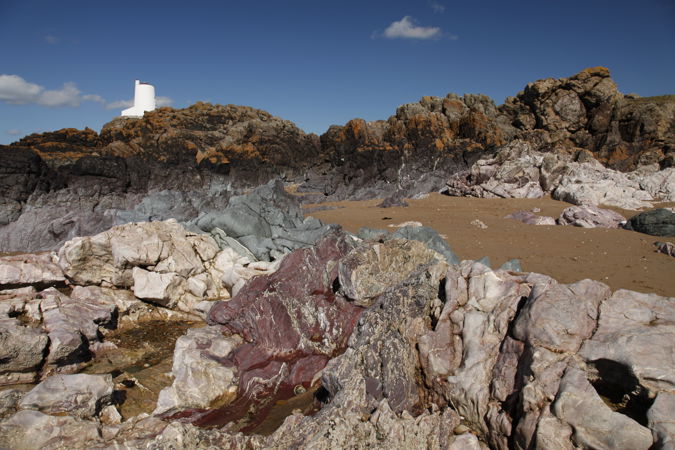Global accolade for Wales on International Geodiversity Day

A small corner of Anglesey has been named among the best geological sites in the world.
Ynys Llanddwyn, part of Newborough National Nature Reserve and Forest, has been named in the First 100 Geological Heritage Sites list – key geological sites of international scientific relevance with a substantial contribution to the development of geological sciences through history.
It is a joint recognition from the International Union of Geological Sciences (IUGS), one of the world’s largest scientific organisations, and UNESCO.
The announcement is being made as part of UNESCO International Geodiversity Day (October 6) which helps promote a better understanding of the Earth’s dynamic processes and help foster a more sustainable society.
Ynys Llanddwyn and Newborough Forest are formed from a chaotic mixture of rocks, including limestone, cherts and pillow lavas thought to be at least 500-600 million years old.
First studied more than 200 years ago, geologists from all over the world continue to visit the area to test their theories and consider the origin of the complex geology.
As well as its geological features, Newborough, which is managed by Natural Resources Wales (NRW) is home to some of Wales’ most precious habitats and supports a range of rare wildlife including orchids, amphibians, invertebrates, mosses and lichens.
Raymond Roberts, NRW’s Lead Specialist Advisor for Geodiversity, said:
“This is fantastic recognition for Ynys Llanddwyn and Newborough which means it stands among other important and iconic geological sites across the world and recognized by the geoscience community for its impact in understanding the Earth and its history.
“Having a global recognition for one of Wales’ world class geological sites is a fantastic achievement. NRW manages and protects a number of sites across Wales for the benefit of the environment to protect geodiversity, increase biodiversity and to help tackle climate change and this recognition helps support that work.”
More than 200 specialists from almost 40 nations and ten international organisations, representing different disciplines of earth sciences, have participated in the selection of sites.
The full list of global sites will be revealed at a special IUGS event at the end of October.
